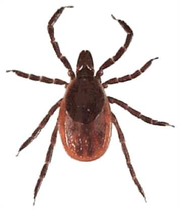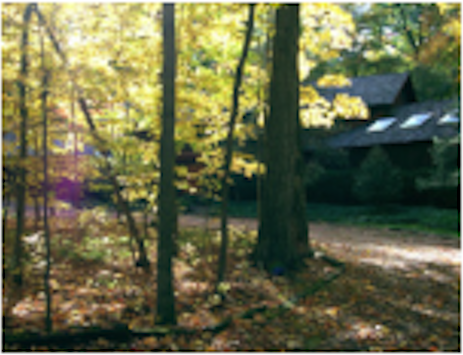Fall is the best time to control tick populations

Rolf Brandt, Arborist The Care of Trees
Fall is your best time to control tick populations: More than 300,000 cases of Lyme Disease are reported to the Center for Disease Control each year making it the most commonly reported tick-borne illness in the United States. It is spread by the black-legged tick, commonly referred to as the deer tick though it is more likely to be spread to your yard by mice or squirrels.
Although ticks can bite at any time of the year, according to Rolf Brandt, arborist for The Care of Trees in Mt. Kisco, ticks are most active in the beginning of fall. Because as many as 90% of tick bites occur in your own yard, reducing the tick population on the property surrounding your home is your best defense against tick-borne illnesses.
Where do ticks live? “Ticks live in damp and shaded areas of your property, such as stone walls, overgrown gardens and wood and brush piles,” he told us. “General fall clean-up programs like clearing brush piles and weeding gardens help give them fewer places to hide but we recommend a safe and ecologically friendly tick suppression program to control tick populations in your yard.
What’s involved in a pro-active tick suppression program. Rolf Brandt laid some options out for us:

Adult female deer tick
Pruning – Ticks are extremely susceptible to dehydration. An arborist can help to make your property less attractive to ticks by pruning your trees and shrubs, resulting in improved light penetration and air circulation to the landscape below.
Fencing – Construct physical barriers to deter deer from entering your property. Deer repellant sprays may also be applied onto the plantings around your home to keep deer away. Consult with your certified arborist regarding this service.
Wood chip barriers – Ground-cover plantings and leaf litter provide the type of moisture ticks need. Consider creating a 3-foot barrier of dry wood chips around your yard to keep ticks from migrating into the areas of the landscape you use.
Pesticides: Pesticides for ticks can reduce the number of ticks in your yard. Only small amounts of these control products applied at the right time of year are necessary.
Organic Tick Control & Lawn Treatment: Organic solutions for tick control include utilizing cedar oil as a protective spray that kill ticks on contact and provide residual control as a insect repellent that lasts 30-60 days without introducing any harmful chemicals into the environment.
Fall is one of your best times to control tick populations

A breeding ground for ticks
“It’s important to understand that only 2% of ticks are found in lawns. 90% are found in the landscape areas where the woods meet the lawn and fields. So lawn spraying is really the last resort to controlling tick populations,” Rolf said. “”People typically spray throughout the spring and fall to help gain control over the tick population.” A full tick control program that includes spraying, pruning, and barrier dehydration efforts in the fall gives you the most bang for your buck. Timing is crucial. You want to do everything before the leaves start to fall to kill the adult tick population that comes out at the end of the growing season. It not only provides protection through the winter but less adults in winter means less baby ticks in the spring. (The Care of Trees, 458 Lexington Ave., Mount Kisco, 914.290.4330; www.thecareoftrees.com/mountkisco)
More Fall Survival Tips More Home & Garden Tips

















